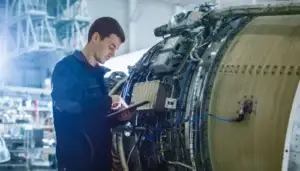Summary: Organizations of all shapes and sizes are increasingly working to streamline processes and improve efficiency to compete in today’s fast-paced business world. Today, Muri Lean Manufacturing, a methodology resulting from The Toyota Production System (TPS), is widely used to achieve these aims. The rub is all about time waste and two forms: 1 overburden or overwork, 2 is unnecessary workload or waste is uselessness, or Muda! Using Lean principles, companies can identify waste and then place it into three broad classifications, including overproduction, excessive inventory, and unnecessary motion to address and eliminate them collectively.
Understanding Muri, Muda, and Mura
One crucial aspect of Lean Manufacturing often overlooked is the concept of “Muri,” which denotes the overburden or excessive strain placed on individuals or systems within the organization. Muri leads to Muda, as it causes unreasonable workloads, inefficient processes, and an accumulation of waste. To tackle Muri Lean effectively, organizations must strive for standardization, work-in-progress limits, and removing unnecessary tasks or burdensome activities from their workflows.
What is Muri?
Muri, a concept from the innovative Toyota Production System, signifies overburden or excessive strain placed on individuals or systems within a complex workflow. Muri creates inefficiency, leading to frequent errors, frustrating delays, and dramatically increased employee stress levels.
What is Muda?
Muda is another fundamental concept in Lean Manufacturing, which refers to any form of waste or wastefulness within a process. It encompasses activities that do not add value to the customer, such as overproduction, waiting time, unnecessary transportation, excess inventory, and defects. Organizations can streamline their workflows and improve efficiency by identifying and eliminating Muda.
What is Mura?
Mura, the third concept in Lean Manufacturing, focuses on the unevenness or irregularity in production. It occurs when there are fluctuations in customer demand, resource allocation, or production capacity. Mura leads to inefficiency, as processes are not optimized to match the demand. By addressing Mura, organizations can achieve better synchronization and reduce waste.
The Three Types of Waste
Muda: The Enemy of Efficiency
Muda, often called the seven wastes, is a critical aspect of Lean Manufacturing. There are two types of Muda: Type 1, which involves non-value-added activities, and Type 2, which refers to activities that could be improved. Examples of Muda include overproduction, waiting time, unnecessary transportation, excess inventory, defects, over-processing, and underutilized employee skills. Organizations can significantly improve their productivity and overall efficiency by identifying and eliminating Muda.
Mura: The Unevenness in Production
Mura, the irregularity in production can disrupt workflow and lead to inefficiencies. It occurs when there are fluctuations in customer demand, resource allocation, or production capacity. This unevenness can result in overburdening certain parts of the workflow while leaving others idle.
Organizations can create a smoother and more efficient production process by addressing Mura and achieving better synchronization. Tools such as the 5S methodology and the Toyota 3M Model can help identify and mitigate Muri within the business process, ensuring smoother operations and increased productivity.
Muri: The Overburden
As mentioned earlier, Muri Lean is the overburden or excessive strain placed on individuals or systems. It occurs when tasks or responsibilities are allocated beyond one’s power or when processes are designed to go beyond one’s capacity. Muri Lean can lead to reduced productivity, increased errors and defects, and employee burnout. Identifying and eliminating Muri is crucial for creating a balanced and sustainable workflow.
Identifying Muri in Your Workflows
Organizations can create leaner processes, streamline operations, and enhance overall efficiency by understanding and addressing Muda and Muri. By removing wasteful practices and reducing excessive strain, businesses can optimize workflows, improve employee satisfaction, and ultimately drive greater success in today’s competitive market landscape.
Signs of Overburden
To identify Muri in your workflows, it is essential to be aware of the signs that indicate excessive strain or overburden. These signs may include employees consistently working overtime, frequent errors or defects in the output, delays in meeting deadlines, high levels of stress among team members, and a general sense of overwhelm within the organization. By recognizing these signs, you can pinpoint areas where Muri exists.
Causes of Muri
Effectively eliminating Muri requires understanding its causes. Poor workload allocation, lack of standardized processes, inadequate training or resources, unrealistic deadlines or expectations, and inefficient use of technology or equipment can all cause Muri. By identifying the root causes, you can address them and create a more balanced and optimized workflow.
Spotting Muri in Action
To spot Muri in action, let’s look at an example. Suppose a manufacturing organization experiences a sudden surge in customer demand, requiring the production team to ramp up production. However, the existing workflow is not designed to handle such an increase, and the employees are overwhelmed with the workload. This results in errors, delays, and reduced overall productivity. In this scenario, Muri becomes evident as the overburden placed on the employees is beyond their capacity to handle.
The Impact of Muri on Workflows
Reduced Productivity
Muri has a significant impact on productivity. When individuals or systems are overburdened, their ability to complete tasks efficiently and effectively diminishes. This leads to decreased output and overall productivity. Organizations can improve productivity and achieve better results by reducing Muri and creating a balanced workload.
Increased Errors and Defects
Overburdened workflows are prone to errors and defects. When employees are overwhelmed with excessive workloads, they may rush or make mistakes due to fatigue or stress. This can result in a higher number of errors and defects in the final output. Organizations can reduce errors and improve the quality of their products or services by eliminating Muri and ensuring a manageable workload.
Employee Burnout
Muri can have severe consequences on employee well-being. When individuals consistently face overburdened workloads, they experience high stress and burnout. This negatively affects their mental and physical health and reduces their motivation and job satisfaction. Organizations can prevent employee burnout and promote well-being by addressing Muri and creating a healthier work environment.

Digitize your business for excellence
- Process Automation
- Regulatory Compliance
- Process Monitoring
- Performance Analysis
Strategies to Reduce Muri
Implementing Visual Management
Visual management is a powerful tool that helps identify and reduce Muri in workflows. By using visual cues, such as Kanban boards, progress charts, and status indicators, organizations can clearly understand the workload distribution and identify potential overburdened areas. Visual management enables teams to collaborate effectively, prioritize tasks, and ensure a balanced workflow.
Utilizing Kanban Systems
Kanban, a popular Lean tool, can be instrumental in eliminating Muri. Kanban systems enable organizations to visualize their workflow, limit the work in progress (WIP), and establish a pull system based on customer demand. By using Kanban boards and cards, teams can visualize their tasks, identify bottlenecks, and prevent overburdening specific workflow stages.
Setting Work in Progress (WIP) Limits
Setting WIP limits is an effective strategy to prevent Muri and promote a balanced workflow. WIP limits ensure evenly distributed work, promoting a smoother and more efficient workflow.
The 3M Model: Steps to Eliminate Muda, Mura, and Muri
To effectively eliminate waste, unevenness, and overburden, organizations can follow the 3M model. This model consists of three steps: identifying waste (Muda), addressing unevenness (Mura), and eliminating overburden (Muri).
Step 1: Identify Waste (Muda)
The first step in the 3M model is to identify waste, or Muda, within your workflows. This involves analyzing your processes and looking for activities that do not add value to the customer. Some common types of waste include:
- Overproduction: Producing more than what is required by the customer or producing too early, leading to excess inventory and storage costs.
- Waiting time: Idle time between process steps or delays caused by dependencies, resulting in decreased productivity.
- Unnecessary transportation: Excessive movement of materials or products without adding value, leading to increased costs and potential damage.
- Excess inventory: Stockpiling more inventory than necessary, tying up capital and increasing the risk of obsolescence or damage.
- Defects: Errors or defects in the output that require rework or result in customer dissatisfaction.
- Over-processing: Performing more work than required or adding unnecessary features, wasting time and effort.
- Underutilized employee skills: Not fully utilizing the skills and knowledge of employees, resulting in missed opportunities and reduced efficiency.
Step 2: Address Unevenness (Mura)
The second step in the 3M model addresses unevenness within your workflows or Mura. This involves analyzing the flow of work and identifying areas with fluctuations in customer demand, resource allocation, or production capacity. Some examples of unevenness include:
- Fluctuating customer demand: Inconsistent or unpredictable demand patterns can lead to underutilization or overburdening resources.
- Uneven workloads: Imbalanced distribution of work among team members or departments, resulting in overburdening some and underutilizing others.
- Inefficient resource allocation: Poor allocation of resources, such as equipment or manpower, leads to bottlenecks or idle time.
Step 3: Eliminate Overburden (Muri)
The third step in the 3M model is eliminating overburden, or Muri, within your workflows. This step focuses on ensuring that tasks and processes are designed to match the capabilities and capacities of individuals and systems. Some strategies to eliminate Muri include:
- Workload balancing: Distributing work evenly among team members or departments, considering their skills and capacity.
- Standardized processes: Developing standardized procedures and work instructions that are realistic and achievable.
- Adequate training and resources: Providing employees with the necessary training, tools, and resources to perform their tasks effectively.
- Realistic deadlines and expectations: Setting achievable deadlines and expectations considering available resources and capabilities.
Benefits of Eliminating Muri
Eliminating Muri from your workflows can bring several benefits to your organization. Some of the key benefits include:
Improved Efficiency and Productivity
You can significantly improve efficiency and productivity by eliminating overburden and optimizing work processes. When tasks and workloads are balanced, employees can work more effectively and produce higher-quality output within the allocated time.
Enhanced Employee Satisfaction
Reducing overburden and creating a healthier work environment can boost employee satisfaction. Employees who are not overwhelmed with excessive workloads experience less stress and burnout. This, in turn, leads to higher morale, increased motivation, and improved job satisfaction.
Increased Customer Satisfaction
Eliminating overburden creates efficient workflows that improve customer satisfaction. As errors decrease, turnaround times speed up, and the quality of products or services improves, customers are more likely to be satisfied with their experience and remain loyal to your organization.
FAQ | Muri Lean
What is Lean Manufacturing?
Lean Manufacturing is a systematic approach to process improvement that aims to eliminate waste, increase efficiency, and create value for customers. It focuses on maximizing productivity while minimizing resources, time, and effort.
What are the 3Ms in Lean Manufacturing?
The 3Ms in Lean Manufacturing refer to Muda (waste), Mura (unevenness), and Muri (overburden). These concepts help identify and address inefficiencies and improve overall workflow.
What are some examples of waste (Muda)?
Examples of waste include overproduction, waiting time, unnecessary transportation, excess inventory, defects, over-processing, and underutilized employee skills.
How can I address unevenness (Mura) in my workflows?
Addressing Mura involves strategies such as cross-training employees, creating flexible work arrangements, and implementing demand-driven production systems like Just-in-Time (JIT) manufacturing.
How can I eliminate overburden (Muri) in my workflows?
To eliminate Muri, you can focus on workload balancing, standardized processes, adequate training and resources, realistic deadlines and expectations, and fostering a culture of continuous improvement.
What are the benefits of eliminating Muri?
Benefits of eliminating Muri include improved efficiency and productivity, enhanced employee satisfaction, and increased customer satisfaction.
Image: Adobe Stock – Copyright: © bankrx – stock.adobe.com







